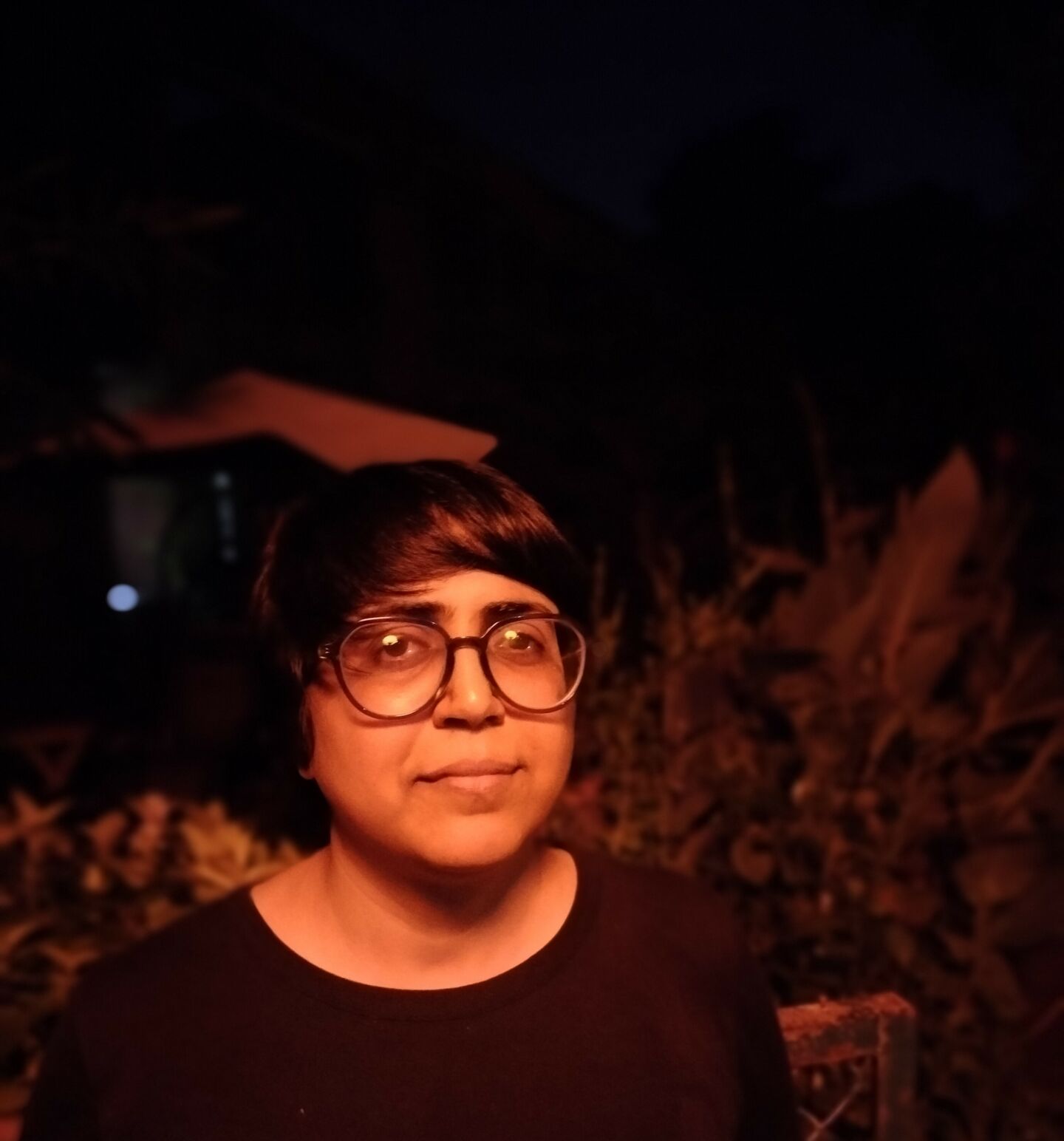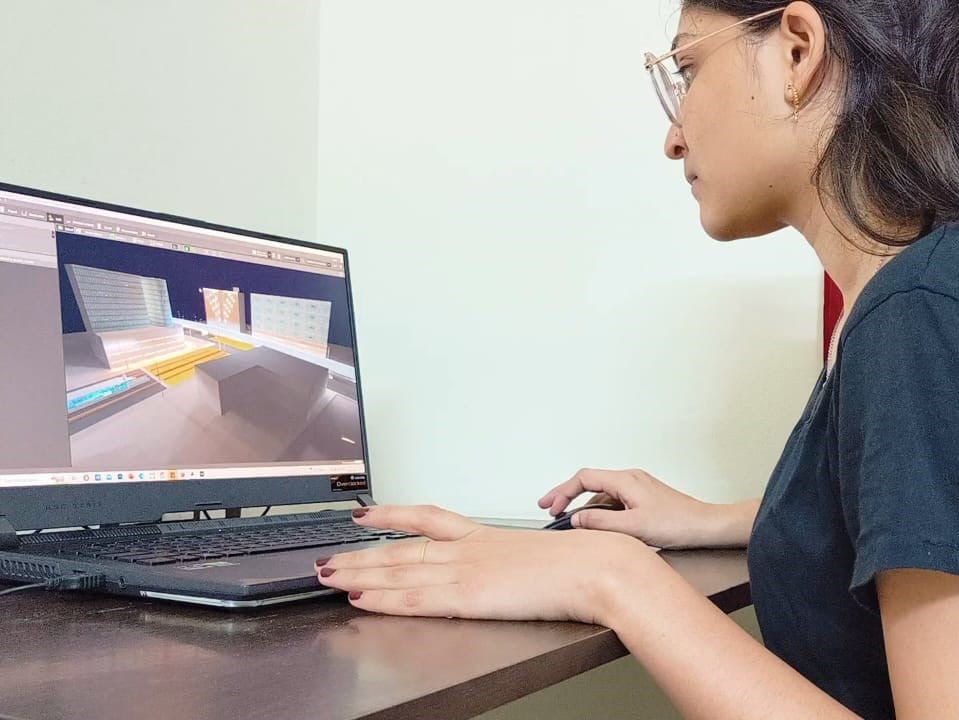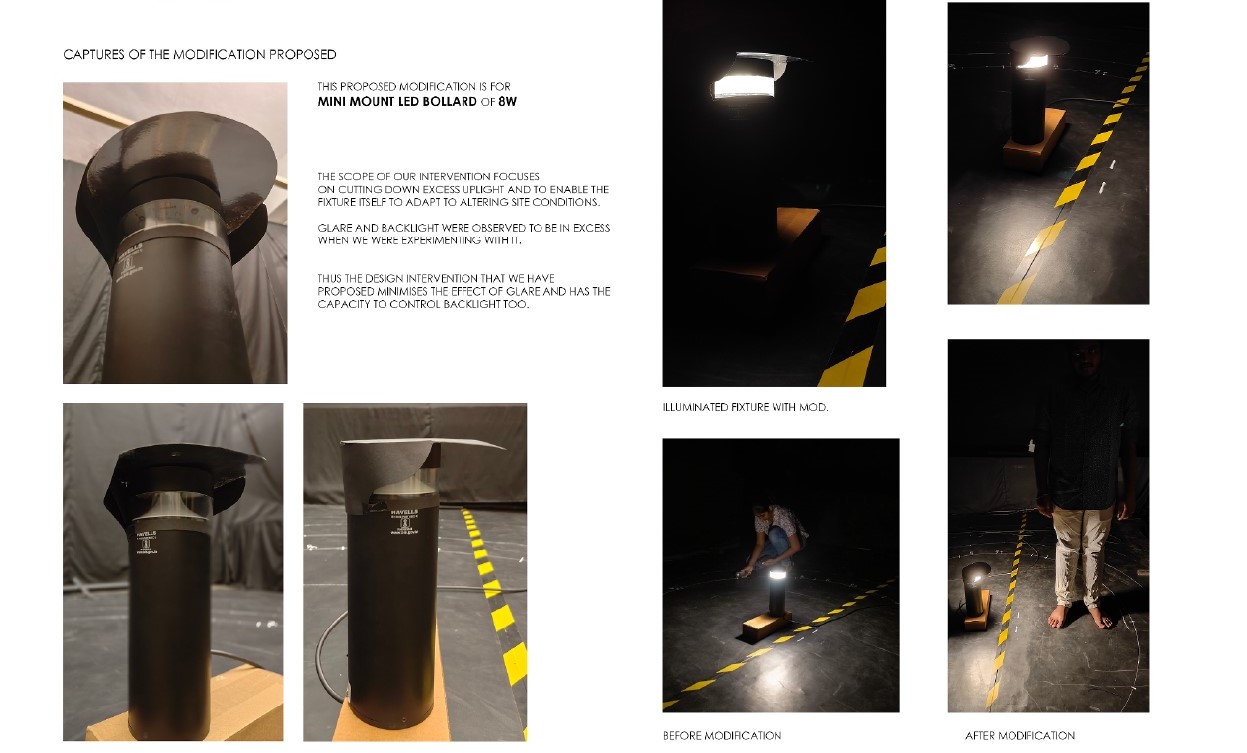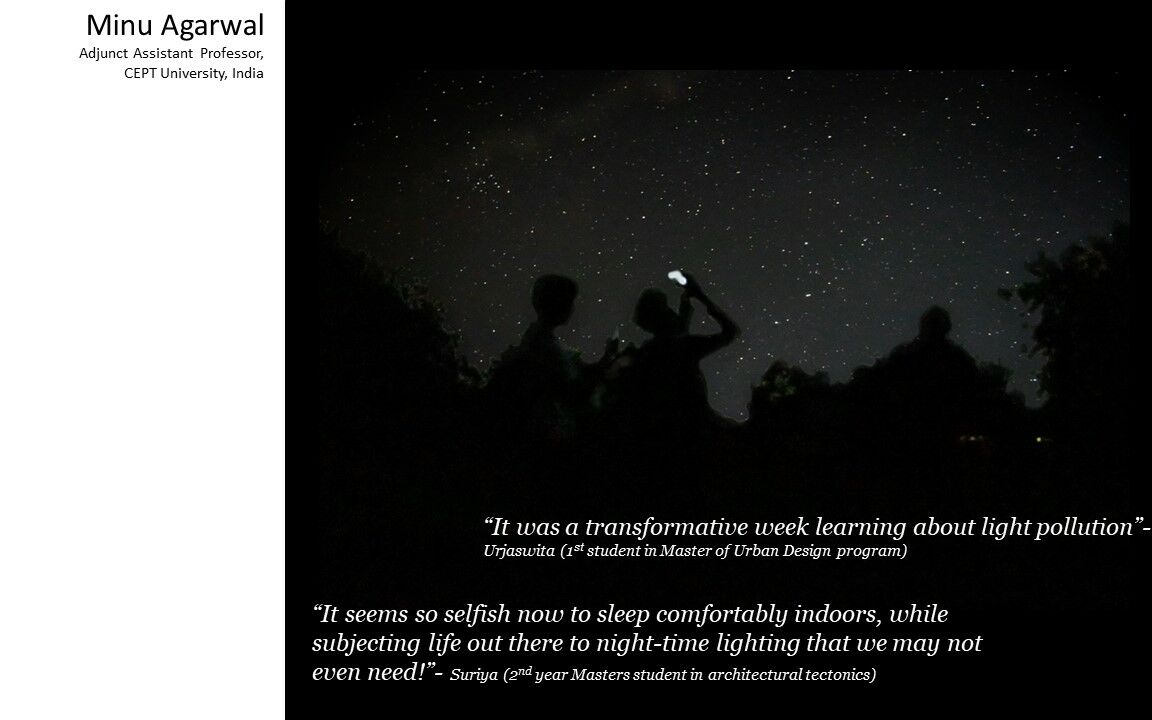
Minu Agarwal: Illuminating Education

Each month, DarkSky International features a DarkSky Advocate from the worldwide network of volunteers who are working to protect the night in a feature called Monthly Star. Growing up in small-town India, educator Minu Agarwal grew to love the stars during power outages. Due to urbanization and technological advancements, the stars have faded from life. It wasn’t until her PhD studies in Switzerland that she discovered the dark sky movement. Now, she teaches younger students about the importance of dark skies. This month, be inspired by Minu’s journey and be ready to learn about her experiences as an educator and advocate for the night sky.
Q: What got you interested in protecting dark skies?
A: I grew up in small town India in the 1980s. Many summer nights were spent on the rooftop tracing the North Star and Ursa Major during the frequent all-night power outages. But over the years the power outages became less frequent, and I stopped thinking about the stars.
I am now a professor at CEPT University in western part of India where I teach architecture students and architects how to design daylit buildings. In the building design domain for a long time, the role of light was looked mainly from the lens of energy efficiency. For example, I have known the term “light pollution” for almost 2 decades now, and for a good part of it, I saw light pollution from the point of view of wasted energy.
In 2015, I started working on my PhD at the LIPID lab at EPFL, Switzerland where a lot of ongoing work was on non-visual effects or health effects of daylight. I got to understand the role of light in our lives from a whole new perspective. While LEDs have weakened the grounds for daylight integration from an energy savings point of view, we were finding ever more critical reasons for thinking about daylight in buildings. In 2021, I came to know about the Dark-Sky Association through a colleague and it was a moment of awakening. It was a true ‘aha’ moment where I realized that teaching about the importance of daylight is utterly incomplete until I also talk about preserving darkness at night.

Q: What is your favorite part about the night sky?
A: I live under highly polluted night skies (Bortle scale 7). It’s difficult to see anything much beyond the brightest stars and Venus. But I am lucky to be living on a university campus with old sodium lamps and sparse nighttime lighting. While not much is visible in the sky because of skyglow from the rest of the city, I still have some access to night time darkness outside my home. To be outdoors in darkness feels therapeutic and meditative. During the class that I now teach on dark-sky preservation, we try to get out of the city to see some dark-skies. Looking at constellations and seeing the same shapes in them (for example, the scorpion, the hunter) that the people saw centuries ago is exhilarating. I feel a real sense of connection to human-history.
Q: What pushed you to teach about light pollution?
A: It is interesting that my journey of awakening towards dark-skies came about through my job as an educator and not the other way around. Being a teacher and researcher is what made me realize the importance of dark-skies. I have always lived under polluted skies and it’s possible that if I did not work in the field of lighting I may have never realized what wonders lie in the dark-skies and the darkness below. Teaching about light pollution helps me share my awareness with others.
Q: How do you integrate dark-sky education into your curriculum (E.G., lesson plans, projects, etc.)?
A: Like any form of pollution, light pollution is a complex issue. I am currently working with a group of students to better understand the diverse sources of light pollution in cities today. For example, two of my students are currently looking at a major road in the city of Ahmedabad (India), trying to estimate the contribution of various sources (public lighting, advertising, signages, façade lighting etc.) of light pollution at a neighbourhood scale.
I also offer a week-long immersive summer school (elective or block-course) to architecture, urban planning and design students. I typically begin with 1) What is light and light pollution? We talk about the night rhythms of the human body and other creatures. We talk about methods for measuring light pollution and try out the “globe at night” app while stargazing. This is followed by talking about human vision at night. We talk about how the human eye (and eyes of other creatures) adapt to the night and how light affects sleep patterns. Finally, we work 2-3 days on responding to lighting pollution through design and advocacy.

Q: What are some of your favorite hands-on activities or resources for teaching about light pollution?
A: We have currently set-up a darkroom on the CEPT campus with help from Havells Lighting Ltd. specifically for the course on light pollution. In this darkroom students can examine the photometry of common types of outdoor light fixtures. Students have found it really interesting to work in the darkroom and it has also given us the flexibility to conduct sessions any time of the day. The light fixtures in this darkroom were provided by Havells Lighting, one of the largest lighting manufacturers in India. It was great for the students to see that a lighting manufacturing company was taking the issue of light pollution so seriously. In future rollouts of the course, I am hoping to include retail signage and advertising related lighting as well.

I am also working to develop a role play exercise in conjunction with a local policy school. We did a short run of this role play exercise this year at CEPT University where I asked students to form teams representing local civic bodies, business owners and citizen’s groups and try to suggest what each group could do about light pollution in our city. In just a couple of hours students were able to come up with sketch financial plans for the local businesses, action plans for the citizens group and research projects that civic bodies could be funding. I am hoping with such role play, students can walk away with a more personal connection and sense of commitment towards the issue of light pollution.
Q: What advice would you give to others who teach about dark skies?
A: I have found it extremely rewarding to teach about dark-skies on a university campus that primarily focuses on buildings and the urban environment. Teaching about dark-skies can help people think beyond human needs and “human centric” design.
Q: What is your greatest success in teaching others about the night sky?
A: The greatest success has been to see the deep interest and concern among the students for the light pollution issue. It was great to see that in just a couple of hours students were able to dive and engage with the topic without any prior exposure. At the end of the course, one of the Masters students expressed her frustration saying that “why did she not get to know about the issue of light pollution sooner.”

Q: Why is it important to pass on our passion for dark skies to future generations?
A: I think we really stand at cross-roads for dark-sky preservation in various parts of the world. In developing countries, there is great need and demand for public infrastructure development. For example India has seen large investments in street lighting and highway lighting in the last ten years. National street lighting programs have replaced or added upwards of 10 million new LED street lights in India in the last 10 years. While such projects are adding much needed infrastructure, addressing light pollution also becomes more urgent. At this juncture, I see raising public awareness and among professionals such as architects, urban planners and policy makers is critical.
Q: Do you have a funny story to share about teaching university students?
A: I am not sure if this is funny, but an endearing moment is when students linger in the classroom even after the course is over, wanting to talk more about their experience. It shows to me how the topic or dark-skies affects them deeply. It perhaps shows them something in their own work-domain and their lives that needs to change.
Learn more about becoming a DarkSky Advocate.



















